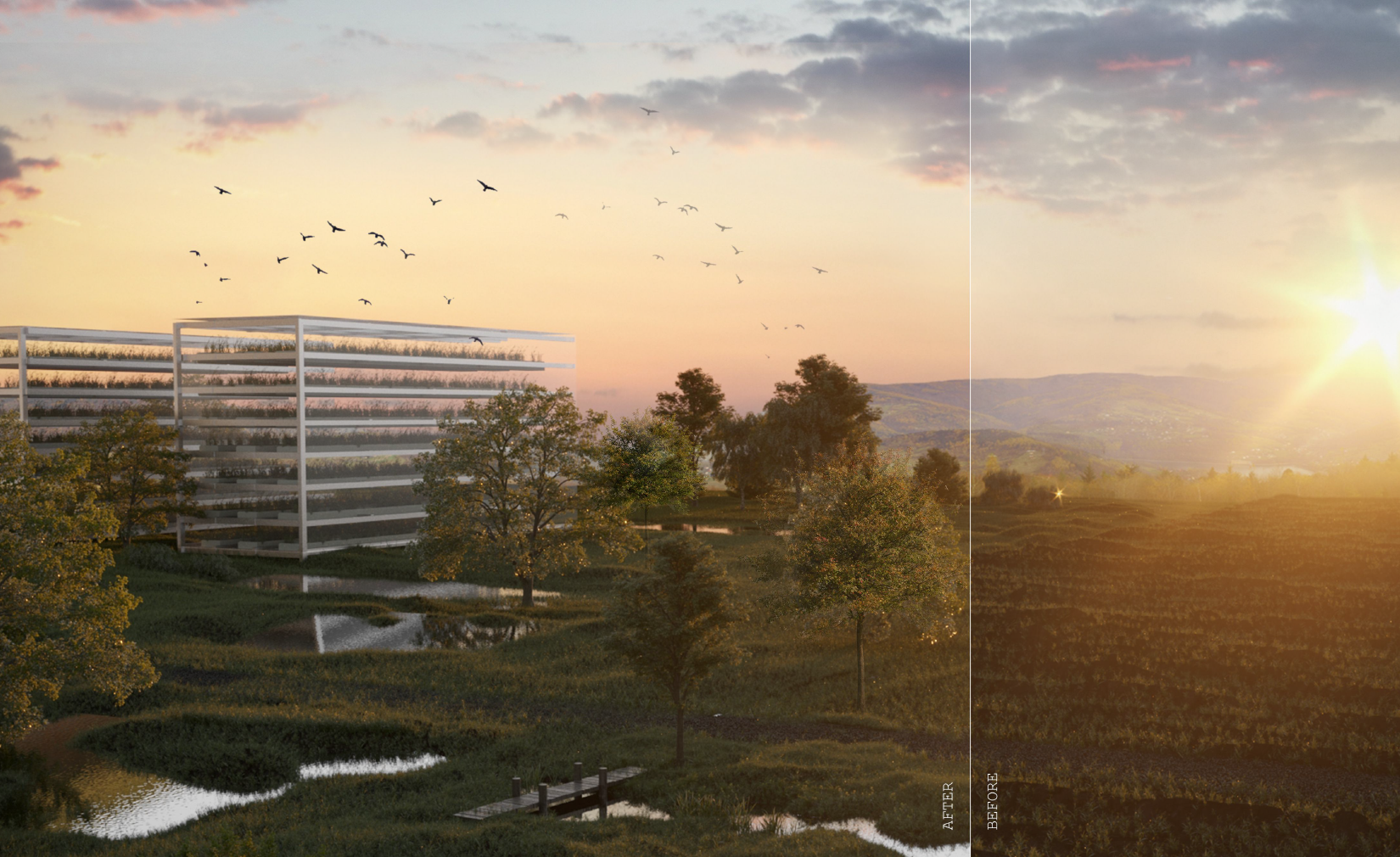
Wetlandpunctures
Landscape Architecture
Kielce University of Technology
The project entitled Wetlandpuncture is a direct response to the problem of too intensive landscape transformation in the region of Murcia, Spain which combined with climate change contributes to the degradation of Mar Menor lagoon and the decrease of the quality of tourist cities located at the coastline. Fertilizers flowing from the fields into the lagoon are the main reasons for the see dying. Murcia is one of the leading vegetables and fruit manufacturer in Europe, and only mutually supportive functioning of the rural and urban landscape can guarantee the future for the Murcia.
The main aim of the project is to decrease surface water flow by wetland restoration. The wetlands existed in the region a few decades ago mitigating floods. The new strategy is based on water excess accumulation and purification performed by wetlands naturally. The study area is divided into three zones. In the first one, all forms of intensive agriculture are replaced by vertical farms with closed water circulation and rainwater recycling from the urban area to be used in rural suburbs. In the second zone, bio-agriculture – Hugelkultur is promoted. In the third zone, each field is surrounded by trees planted along the borders of the plot, rainwater retention ponds located in the lowest part of the field and the perpendicular to the surface water flow drainage systems.
The combination of three different approaches is the response to climate change and landscape challenges. Natural landscape - wetlands are the safest solution to ensure the future for Murcia.
